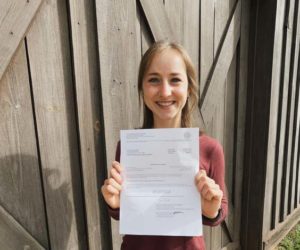In December of 2014, our parish priest approached me about making a sacramental wine for our parish. It was something that I had thought about providing in the past, but I felt funny asking a priest if I could do it. I had always figured that it would be something I would have to be asked to do. I agreed to go ahead and look into what was required to make an acceptable altar wine and understood that we would have to have it approved by our bishop.
After extensive research into the Church Canon Laws that pertain to the production of sacramental wines, I learned they had to be made from 100% grape juice and could not contain any additives, including packaged yeast. I contacted our bishop and in his understanding of how I would make the wine, he gave his approval for its use in our parish. I was excited by the challenge of making this wine without any of the additive aids I had used in the past for my own red wine. I remembered also that my grandfathers never added anything to their crushed grapes — they just allowed the natural yeast that existed on the grape skin to do its thing and it seemed like their wine always came out fine.
In referring back in my wine journal, I picked up the Zinfandel grapes on September 18. In testing the altar wine must, the sugar read 23 °Brix with acid level of 0.40 and a pH of 3.46. I thought the acid level was low, but there really was nothing I could do about it. I was happy with the pH and thought the sugar was acceptable. By September 21, both my wine and the church wine were fermenting, but the wine for my use was fermenting more rapidly. By the September 23, my Zinfandel was down to 4.5 °Brix and the altar wine was still at 22 °Brix. I began to question whether this was going to work out or not.
On September 25, I had taken my Zinfandel out of the primary and had it pressed out and finally the church wine had started to take off and was now down to 7 °Brix. From that Friday, through the whole next week the altar wine continued to bubble along very slowly always showing activity, and with the sugar level going down bit by bit. By October 3, the altar wine had finally reached 1.5 °Brix. I decided it was time to take it out of the primary – it had taken a full two weeks! In almost thirty years of winemaking I had never had a red wine ferment more than seven days.
In late March of 2016 I received a call from our priest saying that he would like to use the new wine for Holy Thursday, March 24, the night celebrating the Last Supper. I knew from past experience that this wine really wouldn’t be ready to drink until at least September — but I also thought what an appropriate time to begin its use. I poured a little into a glass to look it over and drink a little bit. I was first amazed by the color of it – it was so dark, almost black in the glass. When I sipped it I realized it was the red wine I had always wanted to make. It was big and bold; full-tasting with just a slight amount of residual sweetness to complement the overall flavor. Wow God, you know how to make wine! It struck me how little I had to do with the process. I just crushed the grapes and pressed it out. So the whole process had the feeling that I was more just a keeper of the wine rather than the maker of the wine.
I continue now to make both altar wine and wine for my own consumption. My third sacramental vintage sits in my basement waiting its turn.






